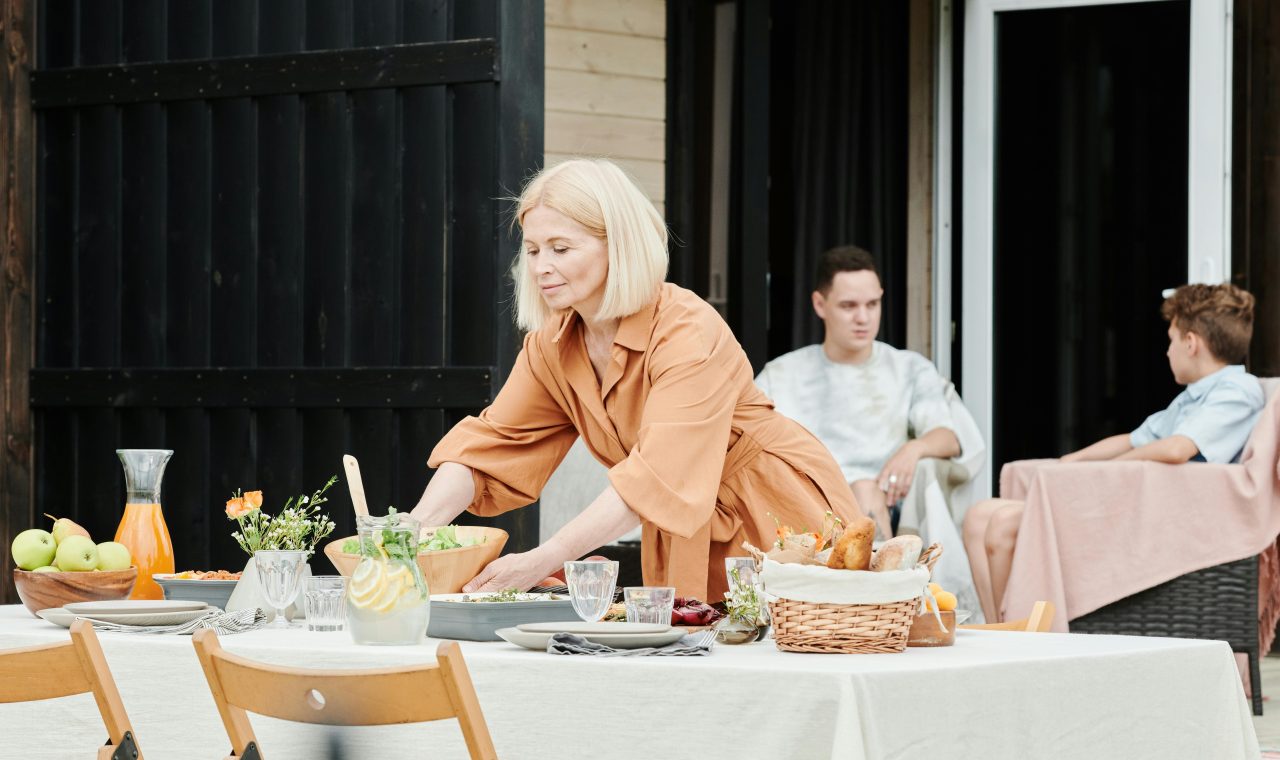Every time I’m doom scrolling on my phone, all I see are #homeofficeinspo #gardenroom #tinyhometips videos. But this phenomenon is not limited to just our phones. You’ll see it everywhere in London. Laptops hogging café tables. Box rooms moonlighting as gyms. Friends bragging about “micro-renovations” between oat flat whites. And you are left wondering is space the newest form of luxury?
Since the office has moved into our homes, we are struggling with finding space in our homes. And I know I’m not alone, apparently 28% of working adults in Great Britain split time between home and the office. But since our homes did not grow to match, we are forced to create multi-functional spaces and rooms.
Earlier this year, I set up a home office as well in my tiny flat. But since I’ve moved, my home is overloaded with things and have been struggling to find space since then. So let’s take a look at what this cultural shift means, how Londoners are adapting and what we can do to make our spaces work.
The Culture Shift You Can See on TikTok and Your Street
If TikTokers have taught us anything – it’s all about quick and easy renter friendly renovations. The renter mindset is practical, not precious. Make a place feel permanent without risking the deposit. Think layered lighting, peel and stick upgrades and reversible colours are just a few things.
And you can see this all around London windows. Yoga mats leaning behind sofas. Folding bikes tucked into alcoves. Spare rooms doubling as offices, then guest spaces at the weekend. But how are they able to create such diverse spaces?
How Londoners Squeeze More Room From the Same Footprint
- Start with less stuff: Organisers preach a simple order. Edit first, buy later. Clutter steals space before any wall does. So start with decluttering your things to items that spark joy and serve a purpose.
- Zone open areas: Use floor rugs, shelving, furniture or wall colour to create work and rest zones. Use light and air flow as a natural guide to create these zones.
- Upgrade your storage areas with smart cabinetry: Think alcove joinery, under-stairs drawers and furniture that hides chargers and stationery. Experts from Ideal Home suggest using leaning furniture, rethinking layouts and making daily items look good on show.
- Design for multi-use: Barratt’s suggest making rooms multi-functional – living rooms that can turn into a cinema by night, office by day and guest room when needed. Smart furniture and tidy cable runs make the switch painless.
- Steal lessons from tiny homes: Houzz.co.uk show how you can use architecture to bring in light, utilise mezzanine floors for extra rooms and built-ins that stretch tight footprints without losing charm.
View this post on Instagram
Create Extra Space Without Moving
Adding extra square footage to your existing home can be difficult but with a little creativity you can create extra rooms than you had before.
If you have a largeish walk-in closet or one of those box rooms, you can divide the room as a part closet and part home office. Londoners are converting their box rooms to small home gyms or offices or nurseries. Strong doors help keep the noise out and create a calm home life.
Another option is a garage conversion, if you are one of the few lucky people with a covered garage but don’t really need it, you can create a zen space. Think large rugs, bookshelves and comfy couches to divide the space. A partial renovation can make them into great hobby areas, workspaces or play areas, but a complete renovation can turn it into extra rooms you can add to your existing floor plan. Be sure to follow your local planning authorities guidelines when filing paperwork.
If you don’t want to deal with the hassles of renovations or don’t have that extra garage, you can expand your square footage through the garden. A few garden furniture and some barbecue equipment make for a great entertainment area. Pro Tip: Create a separate work zone at the end of the garden and remove distractions.
And if you are looking to expand with a more permanent structure just build a garden room. Garden rooms have quietly become one of the UK’s favourite home upgrades, with companies like Surrey Hills Garden Buildings creating bespoke spaces that look more like chic studios than sheds.
View this post on Instagram
Fast wins to try this weekend
Here are some quick decorating tips you can try incorporating into your home:
One-hour Edits
- Lean a ladder desk against a dead wall, free floor space at once.
- Rotate the sofa to create a clear walkway, then place a small rug to mark a reading zone.
- Declutter open shelves and organise containers uniformly so it looks calm and not chaotic.
One-day Jobs
- Add a divider shelf to split a living-work area without losing daylight.
- Hang heavier curtains for sound absorption.
- For multi-use rooms, use rugs and a second lamp to create a reading or desk zone.
Renter-friendly Moves That Feel Permanent
- Try reversible tweaks like removable wall paper and stick on tiles
- Layer textiles, improve light with extra lamps, and invest in art or mirrors that move with you.
- Leaning furniture skips drill holes. Rethink layouts instead of buying more.
Why the Obsession Makes Sense
Space buys calm, privacy and choice. Whether it’s a closed door for calls, a clear table for dinner or just some room are just some of the things we crave. But city life demands flexibility. And with London homes shrinking, people will keep finding space in clever ways. TikTok will keep generating ideas. But for a stylish real-world route, try some of my space building and creating ideas, whether it’s through layout changes or garden updates.
More room means fewer arguments, happier evenings and a kinder London life.

